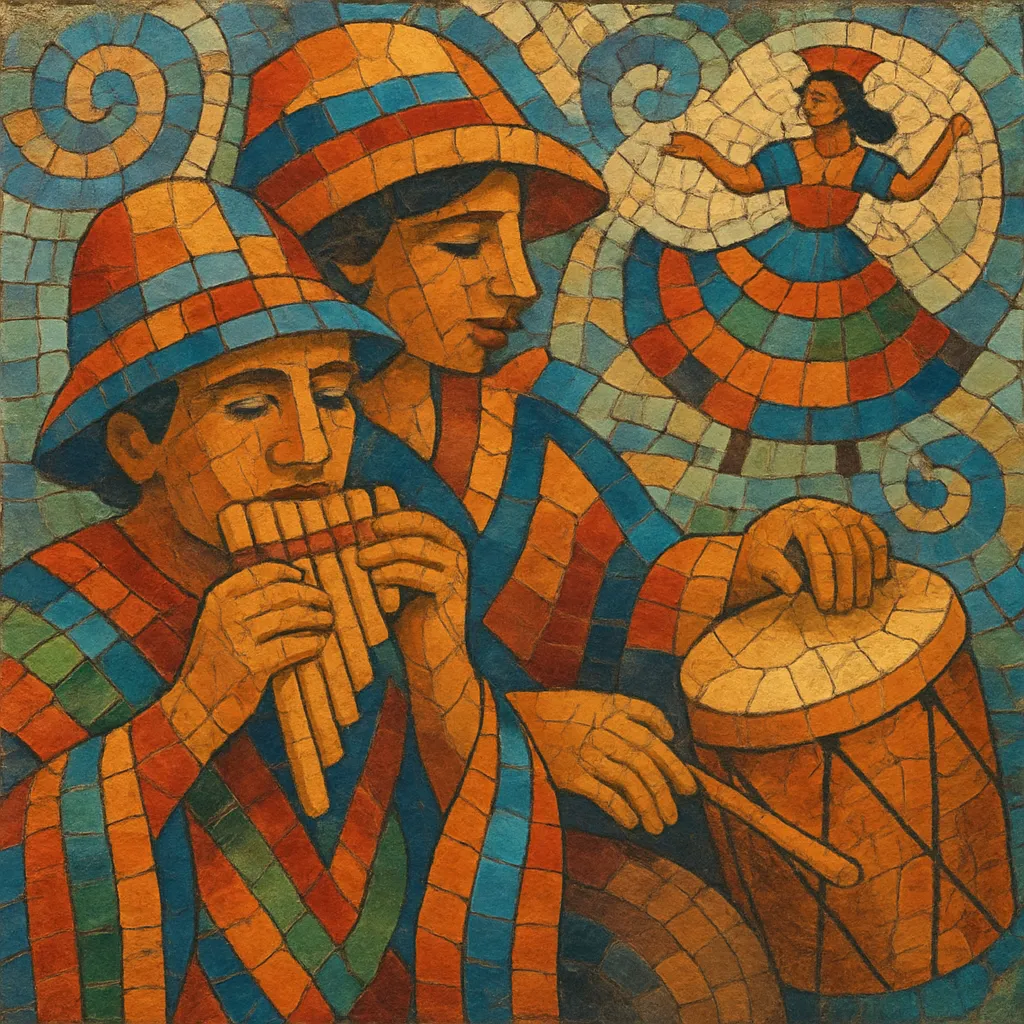Carnavalito is a festive Andean dance-song tradition from the Northwestern Andes, especially the Quebrada de Humahuaca region of Argentina and contiguous highland areas of Bolivia. It is closely associated with Carnival season and community processions.
Musically, it features bright pentatonic melodies led by panpipes (sikus/zampoñas) and quena, buoyed by rhythmic strumming on charango and guitar, and grounded by bombo legüero and caja coplera. Most tunes move in a lively duple meter with strong off-beat accents, and vocals often use call-and-response refrains in Spanish and, locally, Quechua or Aymara. Dance formations typically form serpentine lines or circles that mirror the music’s forward, processional energy.
Carnavalito has deep pre-Hispanic roots in Andean communal music and dance, where collective panpipe ensembles and processional choreography were central to ritual life. During the colonial era, these Indigenous practices intertwined with the European Carnival calendar, shaping a syncretic festive repertoire performed in the lead-up to Lent. By the 1800s, its modern traits—panpipe-led melodies, duple-metre drive, communal chorus—were widely recognized in the Northwest Argentine and Bolivian Altiplano.
In the mid-20th century, folklorists and popular composers helped codify carnavalito within the Argentine and Bolivian folk canons. Edmundo Zaldívar’s widely performed "El Humahuaqueño" became a signature piece, while charango virtuosi and sikuri (panpipe) groups brought the sound to radio, festivals, and urban stages. Ensembles across Argentina, Bolivia, and Chile incorporated carnavalito into repertoires, amplifying its reach during the nueva canción era, where Andean timbres symbolized cultural identity and social consciousness.
Today, carnavalito remains central to Carnival festivities in Jujuy and the Altiplano and is a staple at folk festivals and school ensembles. Modern groups blend traditional sikus and quena with drum kits, electric bass, keyboards, and studio production. Despite these updates, core elements endure: pentatonic melodies, communal singing, and dance lines that celebrate community, landscape, and the cyclical calendar of the Andes.


